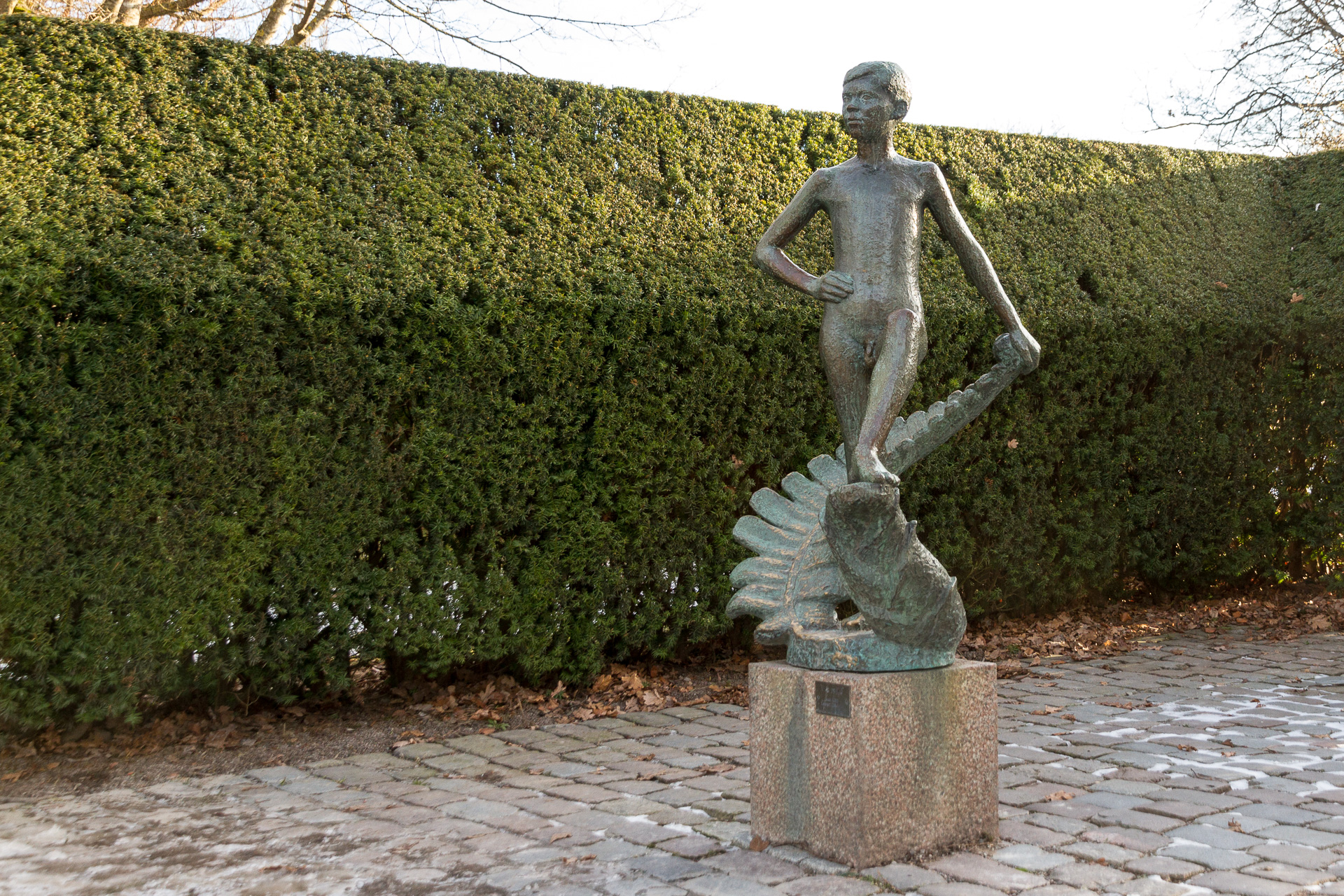Ung pojke (Young Boy)
Here in Stadsparken we meet a bronze sculpture of a naked young boy standing in the middle of a tall fern. The style is realistic. The boy is not yet fully grown. The body is narrow and has long arms and legs. He stands with one hand on the side. The head is slightly turned in the same direction and the gaze straight ahead. The mine is serious. He has pulled up the knee on the opposite side and put his foot on the fern that protrudes from the ground. Behind him grows a long and winding lobed leaf. With his free hand slanted behind him, the boy has grabbed the extreme tip of the fern.

In Swedish art history, the 1950s are often associated with abstraction and an art movement called concretism, in which the interplay between colour and form was considered more important than art’s representation of the real world. The abstract 1950s have left their mark throughout Stadsparken, including in Arne Jones’s fountain sculpture Resonans (Resonance), which was installed as a sculptural headliner at the park’s main entrance in 1958.
But far from all art from this time period was modernistically abstract. The same year that Resonance was purchased, the city also acquired the smaller bronze sculpture Young Boy by Lennart Kjellström, which was placed a bit further into the park. This sculpture is a highly figurative nude and depicts a boy framed by some sort of giant fern.
Kjellström seems almost to have wanted to present his subject as timeless and eternal. Depicting people in the nude has been a way for many artists to detach their motifs from everyday contemporary life. Without the time-typical clothing fashions that anchor the figures to a certain point in time, they can instead be associated with antique nudes and what is considered to be the eternal values of the fine arts.
In this case, the sculpture has also placed the boy next to a fern, a plant that has existed for about 400 million years – long before us humans and our own calculations of time. At the same time, the boy, with his caveat countenance, is typical of the Swedish post-war confidence in the future and an ideal for children of the 1950s to be measured against. Is it perhaps the future that he is looking towards?
Konstverk: Ung pojke (Young Boy)
Konstnär: Lennart Källström
År: 1958
Material: Bronze
Placering: In Stadsparken, next to the “Flower Street”
Ägare: Örebro läns Trädgårdsaktiebolag
Konstverkets position på karta
Publicerad:
Tack för ditt svar!
Berätta gärna vad vi kan göra bättre på den här sidan för att förbättra webbplatsen! Vi har ingen möjlighet att svara, men dina synpunkter är värdefulla för oss. Tänk på att inte skicka in personuppgifter. Om du vill ha svar på en fråga kan du istället använda formuläret ”Lämna en synpunkt”.
Om du ändå skickar in personuppgifter via detta formulär hanteras uppgifterna av Kommunstyrelsen och kan eventuellt lämnas vidare till annan verksamhet inom Örebro kommun i syfte att förbättra vår service.
Här hittar du mer information om hur vi hanterar personuppgifter.
Tack för ditt svar!
Du har nu hjälpt oss att förbättra orebro.se
